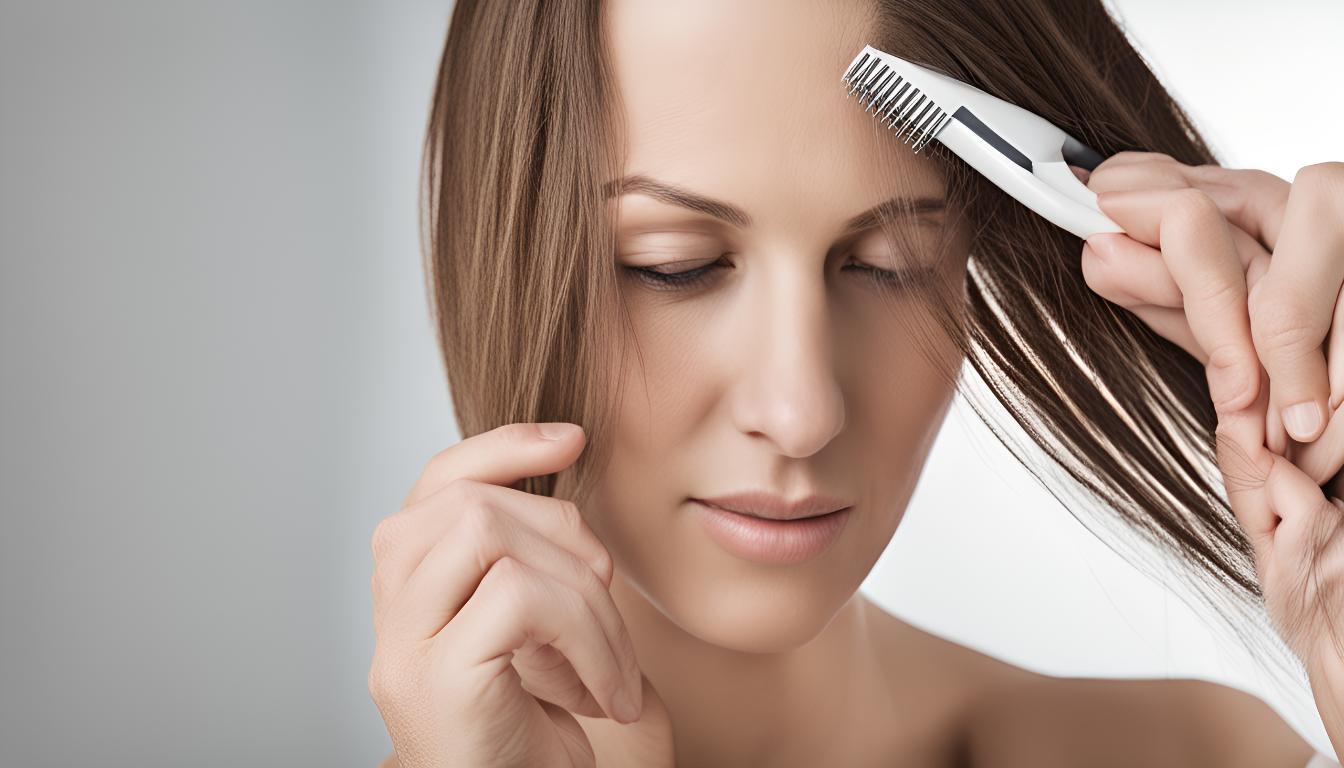Hair loss is a widespread issue affecting individuals globally, regardless of age, gender, or background. Understanding the diverse causes of hair loss is crucial for effective management and treatment. This comprehensive guide explores the various factors contributing to hair loss and provides insights into prevention and treatment strategies.
1. Genetics (Androgenetic Alopecia)
Description:
Androgenetic alopecia, commonly known as male-pattern or female-pattern baldness, is predominantly influenced by genetic predisposition.
Mechanism:
Individuals inherit a sensitivity to dihydrotestosterone (DHT), a hormone derived from testosterone. DHT binds to hair follicles, causing them to shrink gradually over time. This process, known as miniaturization, leads to thinning of hair strands and eventual hair loss.
Genetic Variants and Ethnic Differences:
Discuss how genetic factors can vary among different populations, leading to differing patterns and rates of hair loss. Highlight recent genetic studies that shed light on the inheritance patterns of androgenetic alopecia.
2. Hormonal Changes
Description:
Fluctuations in hormone levels due to various life stages and conditions can contribute to both temporary and permanent hair loss.
Pregnancy and Postpartum Hair Loss:
Explain the hormonal shifts during pregnancy and how they affect hair growth. Discuss postpartum hair loss, its duration, and management strategies.
Menopause and Hair Thinning:
Detail the hormonal changes during menopause and their impact on hair follicles. Discuss treatments such as hormone replacement therapy (HRT) and their effects on hair.
Thyroid Disorders:
Explore how hypothyroidism and hyperthyroidism influence hair health. Include case studies illustrating the relationship between thyroid function and hair loss.
3. Nutritional Deficiencies
Description:
Inadequate intake of essential nutrients can weaken hair strands and impair follicle function.
Vitamins and Minerals:
Discuss the role of vitamins (especially B-complex) and minerals (iron, zinc) in maintaining healthy hair growth. Provide dietary recommendations and supplements that support hair health.
Protein Deficiency and Hair Structure:
Explain how proteins are essential building blocks for hair. Discuss the consequences of protein deficiency on hair structure and growth.
Case Studies and Nutritional Interventions:
Include real-life examples of individuals whose hair health improved with dietary changes or supplementation. Highlight innovative nutritional therapies.
4. Physical and Emotional Stress
Description:
Significant physical trauma or emotional stress can lead to a temporary condition called telogen effluvium, resulting in sudden hair shedding.
Mechanism:
Explain how stress disrupts the normal hair growth cycle, pushing follicles into the resting phase prematurely. Discuss the duration of telogen effluvium and recovery periods.
Stress Management Techniques:
Provide evidence-based stress management techniques that can help mitigate hair loss, such as mindfulness, yoga, and cognitive-behavioral therapy (CBT).
Professional Insights:
Include insights from psychologists or stress management experts on the relationship between stress reduction and hair health.
5. Medical Conditions and Treatments
Description:
Certain medical conditions and treatments can directly impact hair follicles and contribute to hair loss.
Autoimmune Diseases:
Discuss alopecia areata and other autoimmune conditions that cause hair loss. Explain the autoimmune mechanisms involved and treatment options.
Scalp Infections:
Detail common scalp infections that can lead to hair loss, such as fungal infections. Include preventive measures and treatment protocols.
Chemotherapy and Hair Loss:
Explain how chemotherapy drugs affect hair follicles, leading to hair loss. Discuss scalp cooling systems and other emerging strategies to minimize chemotherapy-induced alopecia.
6. Environmental Factors
Description:
Exposure to environmental pollutants, chemicals, and UV radiation can compromise scalp health and weaken hair strands.
Pollutants and Hair Health:
Discuss the impact of air pollution on hair quality and growth. Include studies linking pollutants to oxidative stress and hair damage.
Chemical Hair Treatments:
Detail the risks associated with frequent use of hair dyes, relaxers, and styling products containing harsh chemicals. Provide safer alternatives and preventive tips.
UV Radiation and Scalp Protection:
Explain how UV rays can damage the scalp and hair follicles. Recommend protective measures such as wearing hats or using sunscreen for scalp health.
7. Age and Aging
Description:
Hair naturally undergoes changes with age, including thinning and reduced follicle function.
Mechanism:
Discuss age-related changes in hair follicles, including decreased hair density and diameter. Explain how hormonal shifts and reduced circulation contribute to hair thinning.
Aging Gracefully:
Provide tips on maintaining hair health as one ages, including proper nutrition, scalp care, and lifestyle adjustments.
Innovative Aging Solutions:
Discuss emerging treatments for age-related hair loss, such as stem cell therapy and laser treatments. Highlight their efficacy and potential side effects.

Conclusion
Understanding the multifaceted causes of hair loss is essential for developing personalized treatment plans and preventive strategies. By addressing genetic predispositions, hormonal imbalances, nutritional deficiencies, stress factors, medical conditions, environmental influences, and age-related changes, individuals can proactively manage their hair health. Consultation with healthcare professionals or dermatologists can provide tailored guidance based on individual circumstances and optimize outcomes.




